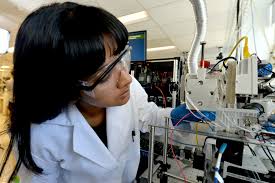Moonshots takes on the notion of the scarcity-driven economy at its core, exposing its many false theses. For example, with respect to energy resources, we don’t have so much scarcity problems, but conversion challenges, which redefines the very nature of problems generally. The fact is renewable energy sources comprise a tiny portion of our energy consumption. Ninety percent of our energy is produced from non-renewable sources. Ninety percent! But think of the sun. The Earth’s surface receives the average of 164 watts of solar energy per square meter every day—equating to 84 terawatts of power (or 84 billion kWh) per day worldwide. But the worldwide population consumes only about 15 terawatts each day—a mere 17 percent of what is actually available. According to Sandia National Labs, more energy strikes the Earth’s surface in 90 minutes than the whole world consumed in the year 2001 from all sources combined. So do we have a scarcity problem or a conversion problem? If we believe we’re running out of energy resources, it’s only because we’re stuck in a 20th century mindset. So let’s fast-forward our thinking with a look at yet another fascinating approach to potentially endless energy production: artificial photosynthesis.
At the center of these developments is JCAP, the Joint Center for Artificial Photosynthesis. It’s one of the Department of Energy’s “energy innovation hubs” focused on developing fundamental scientific foundations that can then be translated to the practical technologies needed to solve large-scale energy problems.

JCAP scientist, Dr. Aniketa Shinde, performing fast screening tests of new catalytic materials for photosynthesis in the high-throughput laboratory in JCAP.
JCAP operates as a partnership among multiple institutions including California Institute of Technology, Lawrence Berkeley National Laboratory, UC Irvine, UC San Diego, and the Stanford Linear Accelerator Laboratory. Together, these organizations are rethinking the science that will affect the entire energy cycle. Dr. Ian Sharp, one of JCAP’s scientists, puts it this way: “Really, we’re tackling one of the most pressing challenges that faces humanity.”
Beyond the obvious energy production objectives, JCAP’s innovations are also dedicated to reducing CO2 levels to a carbon-neutral stasis, promising wide-ranging benefits that go well beyond the battling of greenhouse gases. As such, this science has immeasurable and fundamental value to humanity.


